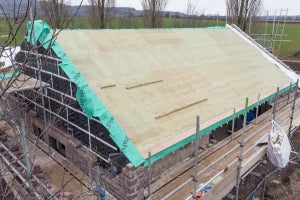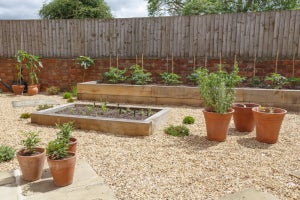What is Water Repelling Plywood?

Water repelling plywood is precisely as it sounds: structural plywood designed to shrug off rain and site moisture during build, so the sheet keeps its shape and strength while work carries on. We see it as a practical upgrade for floors, roofs and wall sheathing when the programme won't wait for a clear forecast. Instead of worrying about brief showers affecting walls or roof panels during installation, you can fit the boards and move on, confident that the sheet will perform as intended and keep the build on schedule.
What makes it different is the protection built into the sheet rather than added on top. Quality softwood veneers are bonded with a weather-resistant glue line, and then the faces get a water-repelling treatment that slows surface wetting. Many boards also arrive with factory-sealed edges to reduce swelling at cut lines and corners. The result is plywood that resists wetting, dries quickly and maintains its integrity during typical site exposure while the building is made weathertight.
We specify it on new floors because the sub-floor often goes down before windows and roofs are complete. Traditional sheets can cope with the odd splash but repeated soaking leaves edges raised and fixings proud. Water-repelling boards take that early abuse far better, so finishes go down on a flatter surface and trades don't lose time planing edges or replacing pieces. On roofs, the advantage is obvious. You can board out, tape joints to keep water off the structure beneath, and keep the sequence moving. The same logic applies to exposed sheathing and modular builds that may meet rain in transit.
There's a financial case as well as a technical one. Yes, the sheet costs more than a standard panel. The saving comes from the labour you don't spend staining, covering and revisiting work, and from the waste you don't generate when ordinary boards spoil. Programmes run smoothly because teams are less affected by showers. The admin goes down, the pace goes up, and the quality at handover is more consistent. There are health and safety gains too, because fewer tarps and ad-hoc coverings mean tidier walkways, clearer edges, fewer snagging nails exposed, and less rework at height, which helps supervisors keep sites organised and reduces disruption when the weather turns suddenly.
Installation remains familiar. Store packs flat and off the ground. When installing, allow a small expansion gap, and fix with the right pattern for the span. When you cut a board, reseal the edge to match the factory finish so protection is continuous. Pair flooring or roofing with appropriate tapes and membranes where the detail calls for it.
Among the options available, DryGuard water repelling plywood has proven popular with contractors who want reliable performance without changing their method. It arrives ready to fit, with repellence and edge protection in place, so there's less to organise and fewer consumables to manage. We've seen it reduce snag lists caused by swollen edges or blown faces. That repeatable result is what matters on busy sites.
Specifications differ, so check structural class, thickness and span guidance, and confirm UKCA or CE marking where required. Also, look for FSC® certified or PEFC certified plywood to ensure responsible sourcing. Our Water Repelling Plywood is FSC® Certified.
Water repelling plywood is not a licence to ignore good practice. It is a safety margin during the messy middle, not a promise that boards can live outdoors forever. Used as intended, it helps the building reach dry-in in better shape, and it makes life easier for everyone who follows.
For teams weighing the premium, look at the whole picture. One lost day costs more than the difference per sheet. DryGuard water repelling plywood earns its keep by protecting the schedule and the finish, which is why we keep it in stock and recommend it where exposure is likely. Choose the right thickness, plan the joints, and let it do the quiet work of keeping water out while you keep the build moving. In our view, that's value beyond the label, and it's why we keep coming back to DryGuard water repelling plywood when the forecast looks uncertain. It saves time, protects budgets, and keeps teams working confidently.







